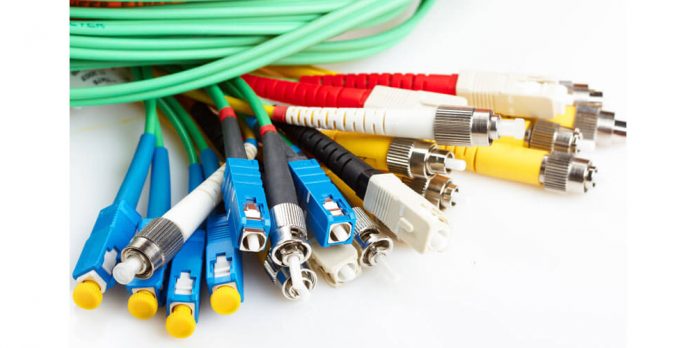A fiber optic cable or fiber patch cord uses light-based technology to transmit information. It comprises thin glass or plastic strands put together in a bundle to form a cable. Unlike conventional copper, cables are very reliable for applications, have high adaptability levels, and improve security. We look at the types of fiber optic cables and their applications down below.
Types of Fiber Optic Cables
These cables can be placed in two categories based on how the core (the innermost part of the cable ) is structured. There are single-mode optical fibers and multi-modes. Multi-modes are further divided into graded-index and stepped index multi-mode optical fibers.
1. Single-Mode Optical Fibre
Regarding the name, the cable transmits one beam of light within it that isn’t in a visible spectrum. Light moves in a straight line since its diameter and the core’s are almost similar and barely have room to move around. They have a considerable bandwidth, and few losses are created in the process. However, being the most recent type of cable, they are expensive, and coupling is difficult.
2. Multimode Optical Fiber
It has multiple fibers, each carrying light waves across its invisible spectrum. The core’s diameter is thicker than that of light, and light modes are moved concurrently through it, forming reflections at varying angles. Not all fiber optic cables have the same number of reflections. They differ because some beams fail to touch the core while passing; hence are incomplete and are absorbed by the cladding. Others form perfect internal reflections, which allow more data to pass through it at any given time but over a shorter distance than the single-mode fiber. Its sub-divisions are;
a. Graded Index Multi-Mode Optical Fiber
This type has a high refractive index at the core’s axis. Over time, a parabolic curve is formed as it decreases from the axis in a radial movement. This shows that the refractive index isn’t uniform, but that of the cladding remains constant.
b. Stepped Index Multi-Mode Optical Fiber
It differs slightly from the graded-index, but both carry multiple wavelengths. The refractive index of the core is constant but decreases sharply in the cladding. Modal dispersion is prevalent; hence data is only transmitted over short distances.
Applications of Fiber Optic Cables
Copper wires are being replaced fast by optic cables which perform better in different industries and applications.
a. Medicine and Research
In dentistry and surgery, they illuminate particular areas of interest so that fewer incisions are made. They are also used in biomedical research.
b. Automotive Industry
The cable transmits information between various parts of the car and lights up its interior and exterior.
c. Security
The high speed of passing data enables smooth transmission of videos, photos, and audio and has a great signal. Accessing security databases is quick and easy.
d. Cable Television
Fiber optic cables have great bandwidth and speed; hence, they are used to transmit TVs with high definition.
e. Lighting and Decorations
The cables illuminate spaces in an attractive manner, which is economical and straightforward.
Conclusion
Fiber optic cables are cost-efficient and convenient for data transmission in remote locations and different applications. The various types differ in structure, specifications, and uses. We have discussed the optical cables’ main uses, but others aren’t common such as mechanical inspections. The cables have great potential and are slowly taking over the future.







